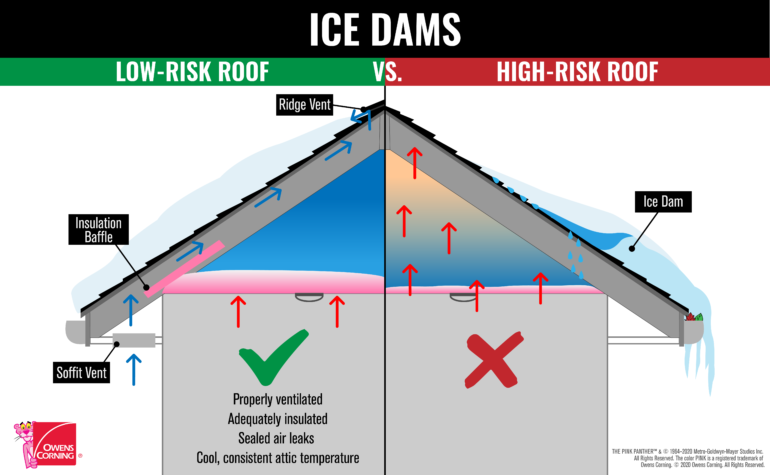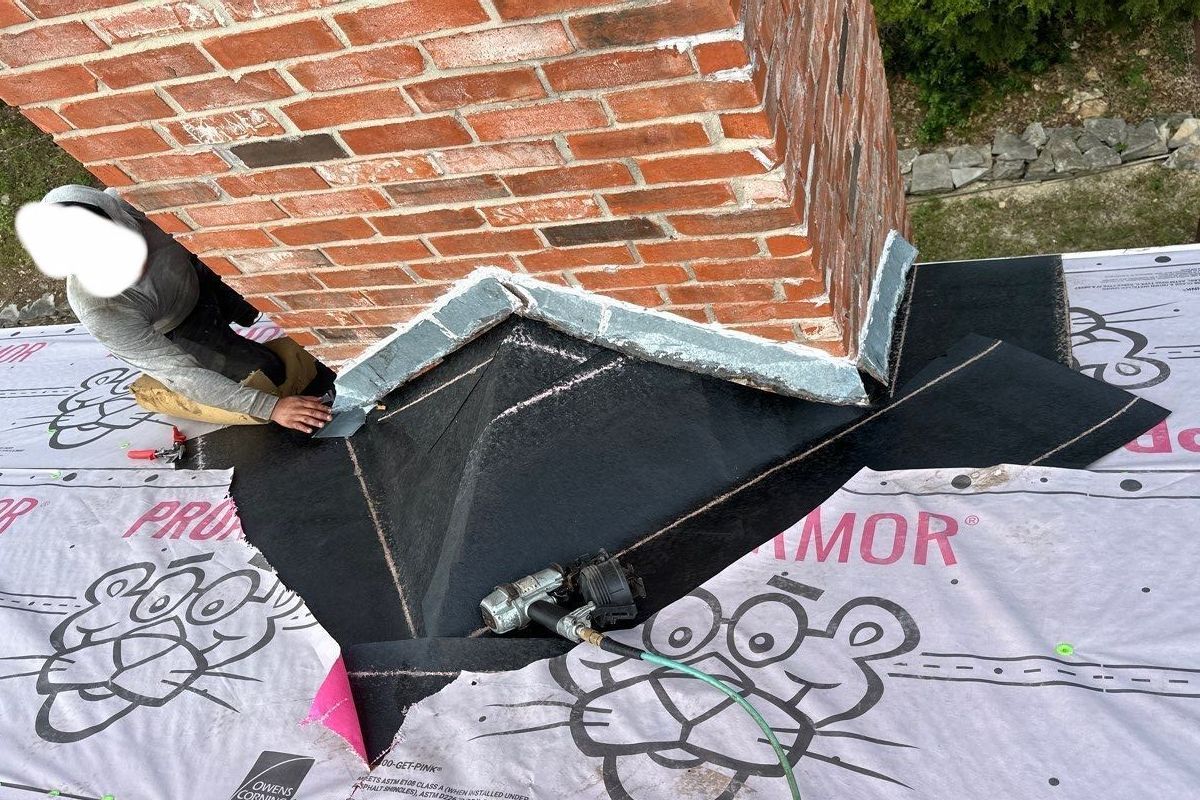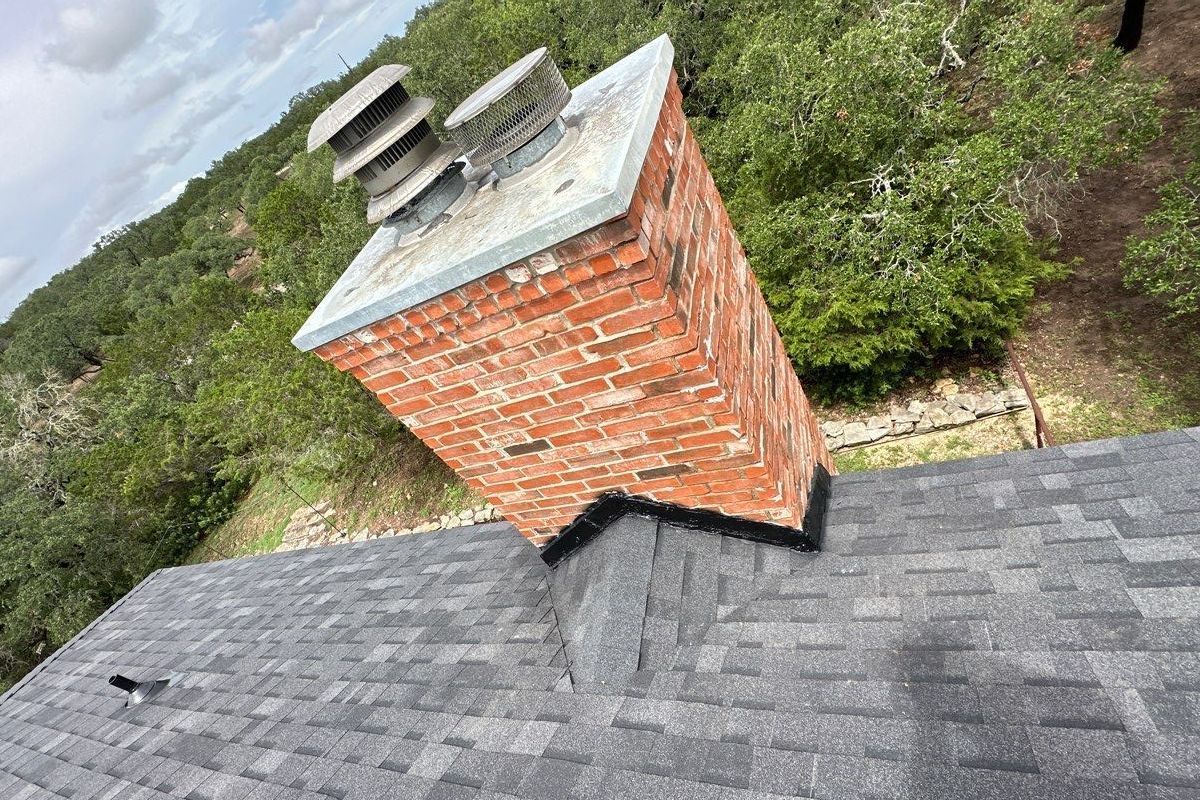How Cold Weather Affects Your Roof: Tips for Texas Homeowners

Winter in Central Texas might not bring the extreme cold of northern climates, but it still poses unique challenges for your roof. From ice dams to brittle shingles, cold weather can cause significant damage if left unchecked. In this blog, we’ll explore how winter affects your roof and proactive steps you can take to protect your home. If you’re unsure whether your roof can handle the season, our guide, Top Signs You Need a Roof Replacement in Central Texas, can help you spot potential issues before they escalate.
How Cold Weather Impacts Your Roof
1. Ice Dams
Ice dams form when melting snow refreezes at the edges of your roof, creating barriers that prevent proper drainage. In Texas, our ridge vents often aren’t designed for prolonged snow or ice exposure, making roofs especially vulnerable. Water backed up by ice dams can seep under shingles, leading to leaks and interior water damage.
2. Freeze-Thaw Cycles
Cold weather can cause water to seep into small cracks on your roof. When temperatures drop, the water freezes and expands, worsening the damage. Over time, these cracks can lead to leaks and structural issues.
3. Shingle Damage
Asphalt shingles can become brittle in freezing temperatures, making them prone to cracking or breaking during freeze-thaw cycles or when icicles fall.
4. Condensation in the Attic
Cold roof surfaces combined with warm indoor air can lead to condensation in your attic. This creates a breeding ground for mold, mildew, and potential structural damage.
5. Heavy Snow and Ice Buildup
While Central Texas rarely experiences heavy snow, even minor accumulations can add significant weight to your roof. This can strain the roof structure, causing sagging or, in extreme cases, collapse.
6. Thermal Shock
Temperature fluctuations during Texas winters cause roofing materials to expand and contract. Over time, this can lead to cracks and leaks.
7. Flashing Issues
Cold weather can cause metal flashing to shift, loosen, or crack, allowing water to seep into vulnerable areas like chimneys, vents, and skylights.
8. Frozen Gutters and Drains
Blocked or frozen gutters can lead to water pooling on your roof, exacerbating ice dam formation and leaks.
9. Snow and Ice Buildup
In rare instances of heavy snow, ice can accumulate on flat or low-slope roofs, creating risks for leaks and structural damage.
Tips to Protect Your Roof During Cold Weather
1. Schedule Regular Roof Inspections
Have a professional inspect your roof at least twice a year to identify potential issues before they escalate.
2. Improve Attic Ventilation
Proper airflow reduces the risk of condensation and ice dams by keeping your roof at a consistent temperature.
3. Insulate Your Attic
Minimizing heat loss through your attic can prevent snow from melting unevenly on your roof, reducing the risk of ice dams.
4. Clean Your Gutters Regularly
Clear gutters and downspouts ensure proper drainage and prevent water from freezing and causing ice dams.
5. Remove Excess Snow
If snow does accumulate, safely remove it to reduce stress on your roof and prevent ice buildup.
6. Address Repairs Promptly
Cracked shingles, loose flashing, and other damage should be repaired immediately to prevent costly problems.
7. Install Ice and Water Barriers
For areas prone to ice damming, such as eaves, gables, and intersections, consider installing protective barriers during roof replacement or maintenance.
Real Experience from Risner Roofing
At Risner Roofing, we’ve helped Central Texas homeowners combat cold-weather roof issues. For example, one homeowner experienced leaks from ice damming on their ridge vent—a situation aggravated by the design of Texas ridge vents, which aren’t built for prolonged snow or ice. Our Solution: We monitored the situation to mitigate water damage and recommended installing ice and water barriers in key areas. While this is best done during a roof replacement, we can address specific leaks with targeted repairs.


Conclusion
Winter can be tough on roofs, but you don’t have to face it alone. Schedule a free roof inspection with Risner Roofing today to ensure your roof is prepared for the colder months. Want to dive deeper into protecting your home this winter? Check out our detailed guide: Top Signs You Need a Roof Replacement in Central Texas.



